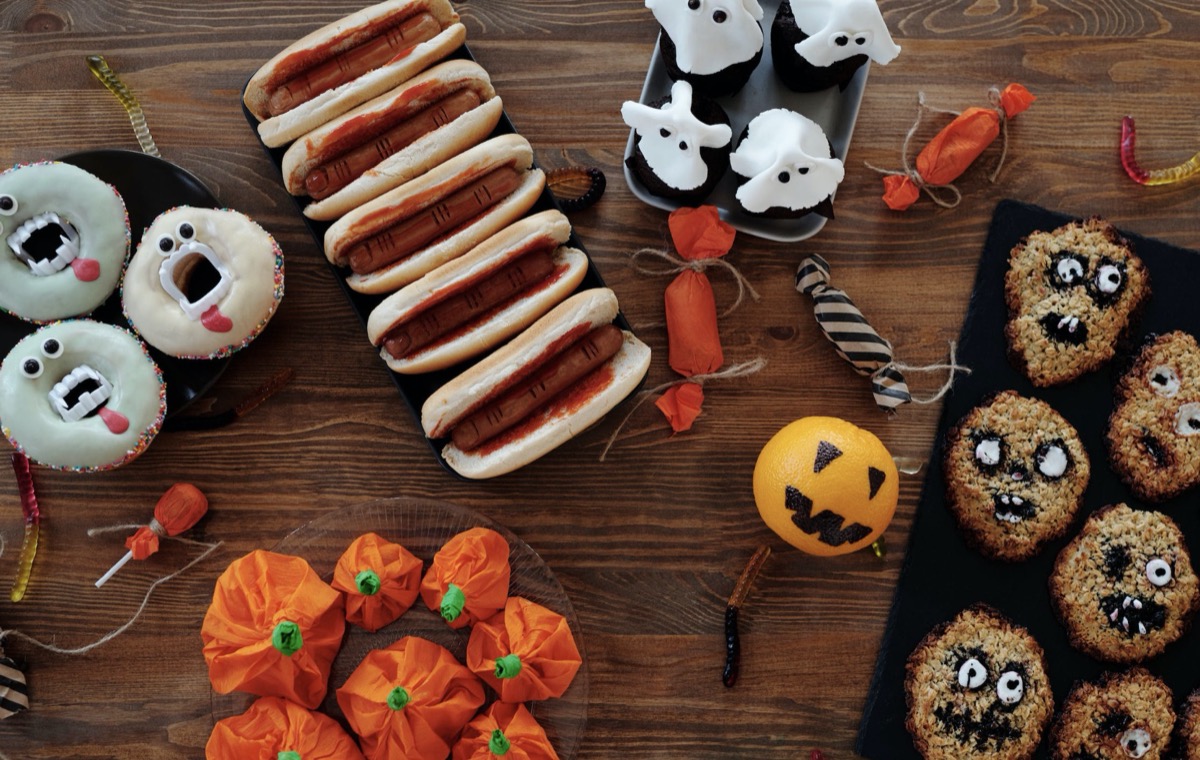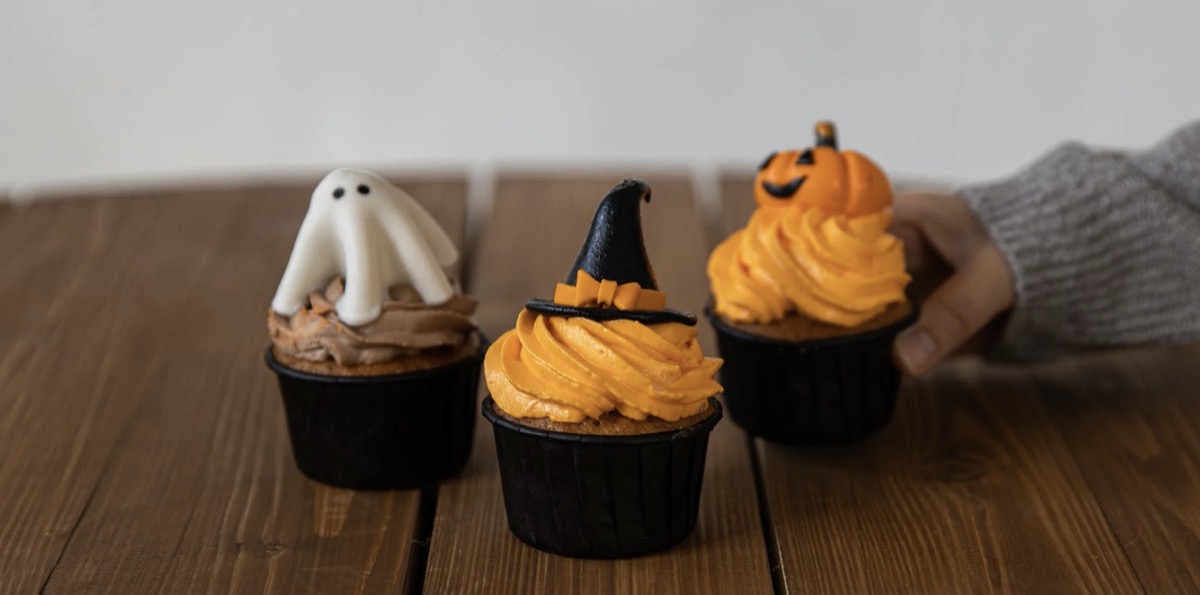Enjoying Halloween in Moderation

The holidays present us with challenges related to food and temptation. Unfortunately, thanks to diet culture dogma, we have this ingrained belief that food is either “good” or “bad”. Other common ideologies that stem from diet culture include “sugar is evil.”
Halloween is quite literally a holiday that revolves around additional sugar consumption in larger quantities than on an average day for most people. Does this mean it’s “bad” or that candy or sugar-sweetened foods are “evil”? No. What this does mean is that foods that are high in added sugars, are likely lower in nutrients and supportive health benefits. Before we dive into the idea of eating in moderation, let’s look at some important terminology.
Nutrient Dense vs. Energy Dense
Nutrient dense foods are those foods that have a high vitamin and mineral content in comparison to their weight. Foods that fall into this category include whole grains, beans, vegetables, and seeds. In other words, these foods pack a lot of nutritional quality.
Energy dense foods are those that contain a high number of calories compared to their weight. Think about foods like baked goods, candy, French fries, and chips.
Both nutrient dense and energy dense foods can have a place in a harmonized dietary pattern. It’s important to approach food and nutrition without being overly restrictive. Food is not “good” or “bad” — food is fuel, nourishment, and joy.
While the candy and goodies we encounter during Halloween are energy dense, they are enjoyable and can be consumed in moderation.

The Not So Sweet Truth about Blood Sugar
Because Halloween signals the “kick off” of the long holiday season ahead, all of which includes rich and sweet dishes and treats, it’s important to mention the need to be mindful of blood sugar management and control. Blood sugar management and regulation do not get the necessary respect they have earned. Partly, because there is a misconception that only those with metabolic disorders (diabetes) need to be concerned with monitoring sugar in the blood. Not true. Blood sugar and its management are important biological and behavioral processes for all individuals — diabetic or not.
When blood sugar constantly spikes and drops, more insulin is recruited more often (this is the fat-storing hormone). When this happens, insulin is working overtime, and glucagon (the fat-burning hormone) is muted. What we want to see is gentle rises and drops in blood sugar throughout the day.
Knowing this, imagine if an individual consumes candy as a snack or on a consistent basis throughout the day, what happens? Blood sugar goes on a dramatic rollercoaster ride and insulin must work that much hard to calm the glucose presence. In addition, the individual is not going to feel fully satisfied and will remain hungry throughout the day.
Keep these general guidelines in mind (daily) during a sugar-forward holiday:
- Focus on eating a combination of protein, high fiber, and healthy fats at meals
- Pair carbohydrates with healthy fats and/or proteins (fruit with nuts or nut butters, whole-grain English muffin with eggs, etc.).
- Select the highest-fiber sources of the starchy carbs (quinoa, whole grains, lentil pastas, oats, etc.).
The lesson here is that Halloween treats can fit into a balanced diet by following simple and easy-to-implement strategies.

7 Tips for Enjoying Halloween in Moderation
- Grant yourself permission to enjoy the goodies. Restricting any food — candy or otherwise — almost guarantees a binge later. Doing this will help you honor your cravings, and it’s ok to have them.
- Consider balancing the candy intake with something else such as a handful of nuts, cheese, or protein-based food items (to balance blood sugar).
- Avoid skipping meals. Skipping meals leads to reduced focus and extreme hunger. When resolve is down, food choices tend to be poorer quality and less satiating. Eat a balanced meal first and then enjoy a sweeter option.
- Keep sweeter treats put away instead of out in the open. It’s true — when something is out of sight, we tend to shift our focus away from it. The freezer is a great place to store chocolate items.
- Track your consumption. This can be helpful to create awareness and mindful consumption instead of haphazardly grabbing multiple handfuls of M&M’s throughout the day.
- Prioritize your favorite type. Candy comes in all shapes, sizes, and flavors. Instead of sampling everything available, set aside a collection of your favorite items and limit consumption to those choices.
- Let go of the guilt. Guilt is not an ingredient in any food item — sweet, savory, or otherwise. It’s ok to enjoy what you wish and still practice healthy habits and remain committed to the goals you set for yourself. Guilt is the only thing that does not belong in dietary habits.
So, this season, remain sweet on Halloween and balance with mindful practices and nutrient dense options.
Dr. Erin Nitschke is a professor of exercise science at Laramie County Community College. She holds certifications including NFPT-CPT, NSCA-CPT, ACE Health Coach, Fitness Nutrition Specialist, Therapeutic Exercise Specialist, and Pn1. Erin is an editorial author for IDEA, NFPT, where she writes regularly on topics related to personal training and health coach skill building, behavior change, and career success.